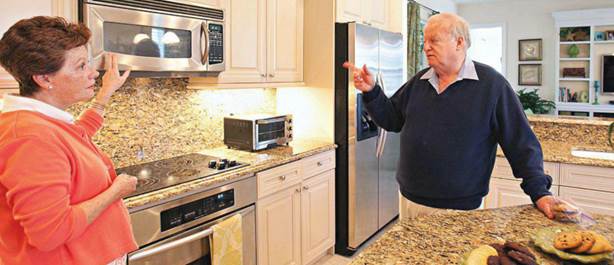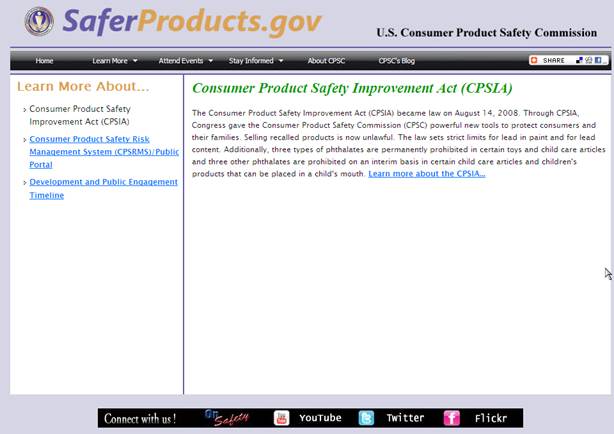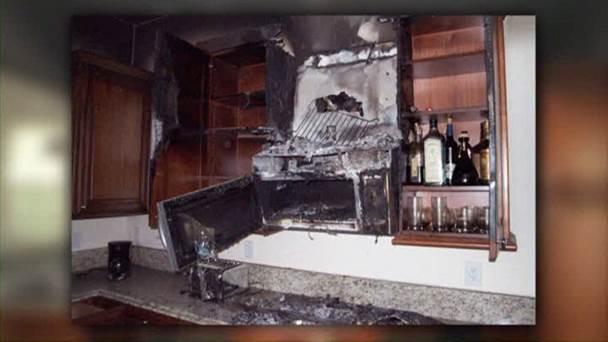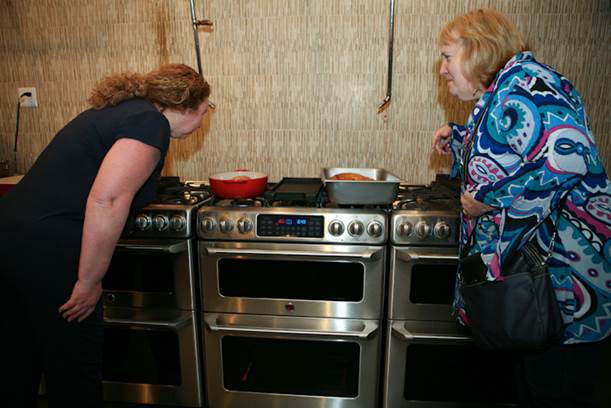When do wayward ovens warrant a recall?
The Antilles, a gated
community in Vero Beach, Fla., with about 90 luxury homes, is built in an
Anglo-Caribbean style meant to combine colonial grandeur with a casual,
island-inspired grace. The single-family residence’ many upscale features
include European-style cabinets, oil-rubbed bronze hardware, and higher-end
kitchen appliances.

Microwave Mystery of Kitchen-Aid in your
house causes danger?
R. Webster is among
the residents of Antilles who say they’re lucky to live there, but for one of
those appliances-an over- the-range microwave from Kitchen-Aid that turned on
in the middle of the night in October 2009 and became very hot, according to a
report he filed with the Consumer Product Safety Commission.
Webster’s report is
among the thousands of pages of documents that we obtained through Freedom of
Information Act requests filed as part of an ongoing investigation into
appliance fires. We filed FOIA requests for CPSC documents about microwaves
from Kitchen-Aid and General Electric in part because they had among the most
fire-related microwave complaints on SaferProducts.gov, a CPSC website where
consumers can report problems. And an ongoing class-action suit against GE over
self-starting microwaves added to the concern.
The CPSC provided us
with 70 reports about Kitchen-Aid microwave ovens, and 41 of them detailed
incidents in which the ovens apparently started by themselves or caught fire
while not in use. Most of the cases occurred in 2009 and 2010; a few go back to
2002. Many of the other reports described glass doors shattering spontaneously.
Experts call for more disclosure in
ongoing safety investigations.
Webster’s case was not
the only one from The Antilles, where the first phase of construction was
completed in 2007. A second report describes a 2008 microwave explosion and
fire at the home of Patrick McCaffery, who lived a few doors down from Webster.
And that’s not all. Through interviews with half a dozen other Antilles
residents, we received similar accounts of microwaves starting up unexpectedly.
They involved the same microwave model, the Kitchen-Aid KHMS155LSS, installed
throughout the community, as did many cases reported elsewhere. The incidents
led to the inside of oven cavities becoming hot, smoking, or electronics and
other components melting, according to the files.

SaferProducts.gov, a CPSC website where
consumers can report problems
Neighbor Suzy Feeney,
like Webster, had to pay about $150 to get a new control panel for her
microwave; she says it turned itself on three times in one day.
Larry Latack, director
of global product safety for Whirlpool, which owns Kitchen-Aid, says the
company is very careful about safety issues and that it has analyzed cases of
supposed self-starting but has never been able to verify one.
Though the number of
cases is relatively small given the millions of microwaves in use, the
consequences can be big if a fire results. A recent CPSC repot identified
cooking equipment as the leading cause of home fires, and estimated 147,000 a
year.
In our March 2012
report on appliance fires, we found that 23 percent were clearly attributable
to some problem with the appliance itself, such as mechanical, electrical or
design defects, and that the percentage could be much higher.
The FOIA files, along
with interviews with consumers, government officials, and industry experts, provide
a window onto some of the challenges in the world of appliance safety,
especially as electronics play a greater role. They show how the CPSC is
restricted from sharing more information about safety investigations, and they
raise questions about why some products are recalled but not others and whether
manufacturers respond appropriately
Deciding what to investigate
Since 1972 the CPSC
has been responsible for protecting the public from unreasonable risks of
injury and death associated with consumer products. Its current staff of about
520, including some 120 investigators and compliance officers, has jurisdiction
over about 15,000 products, everything from toys to tools to toaster ovens. The
agency launches almost 4,000 in-depth investigations each year and announces
450 to 500 that result in voluntary recalls in conjunction with manufactures
and retailers.

Patrick McCaffery says his microwave
caused a fire in his kitchen
So what does it take
to start a recall? It’s not always clear. A recent study by the federal
Government Accountability Office says the CPSC “has broad authority to
identify, assess, and address product risks, but faces some challenges in
identifying and responding to new risks in a timely manner.”
Some safety experts
would like to see more openness so that it’s better known what’s under
investigation. “If you look at some of the fights that are picked by the CPSC,
it’s not clear what the methodology is behind its decision making,” says S.
Kane, president of Safety Research and Strategies, a safety consultancy firm in
Rehoboth, Mass.
CPSC spokesman S.
Wolfson says there is a clear threshold: “In determining whether to open an
investigation, CPSC staff assess whether the agency has taken action on a
similar product, whether there are similar incident reports in our files, the
severity of risk, jurisdiction, severity of injuries reported, available
resources, and other factors.”
Besides the reports
uncovered by our FOIA request, complaints continue to be filed on
SafeProducts.gov, including one from June 2012 claiming multiple self-starts
for Kitchen-Aid KHMS155LSS microwave ovens in a 137-unit condo building in
Seattle. “We saw red and yellow arcs jumping wildly inside the microwave,” one
complainant wrote, saying she and her husband had been jolted awake buy a
booming sound that stopped when they turned off the appliance. Rod K. Pray,
vice president of the Queen Anne High School condominium board, says at least
10 homeowners have reported problems with self-starting microwaves.

The GE documents offer cause for
concern, too. Of the more than 400 incident reports we reviewed, 82 involved
self-starting or spontaneous ignition of microwave ovens.
The GE documents offer
cause for concern, too. Of the more than 400 incident reports we reviewed, 82
involved self-starting or spontaneous ignition of microwave ovens. Model
numbers varied, but 30 complaints listed the Space maker line of over-the-range
microwave units. Other complaints included shattering glass doors and units
that continued to run after the door was opened.
There were at least
six reports of serious fire, including 2008 home blaze in Hudson, Ohio, blamed
on a GE Space-maker microwave and causing $60,000 of property damage. According
to the insurance company’s official laboratory examination from that case, the
fire was caused by an electrical failure or malfunction of the microwave’s
control panel. But the problem is not confined to those two brands. Several
other manufactures’ microwaves received consumer complaints on
SaferProducts.gov for fire-related incidents.
Stuart M. Starler, a
former commissioner and acting chairman of the CPSC who now works as a
product-safety and risk-management consultant in Moores-ville, NC, says:
“There’s enough smoke, literally and figuratively, that a full-scale
investigation should have commenced. Some of the instances clearly indicate a
needless and preventable risk of fie. From a vulnerability aspect, if the fire
were to happen during the night, an entire family could be consumed.”
According to Wolfson,
the agency does in fact have “an open investigation into the safety of kitchen
appliances, including microwaves.” But when pressed for specifics, such as
which brands are involved, he said the agency is prohibited by law from
commenting.
That gets to another
wrinkle in the investigation of faulty products: the limits of disclosure
imposed on the agency by Section 6(b) of the Consumer Product Safety Act. That
provision requires the CPSC to consult with manufacturers and distributors
before going public with specific product dangers. “With Section 6(b),
companies have an unbelievable amount of protection, and they cling to that,”
says Rachel Weintraub, legislative director and senior counsel for the Consumer
Federation of America, an association of nonprofit consumer groups. Section
6(b) can also slow down the recall process by enabling a lengthy back-and-forth
between the CPSC and manufactures.
The issue of Section
6(b) came up at a safety summit in September 2012, where the CPSC indicated
that it might take steps to announce product investigations more quickly. That
would be more in line with the protocol used by the National Highway Traffic
Safety Administration, which can enlist help from consumers and safety
advocates after making investigations public.
But companies
protested. In a letter to CPSC Chairman Inez Tenenbaum, industry leaders wrote,
“An announcement of an investigation has the potential to depress or even to
halt sales and affect the relationship between the company and its
distributors. For small companies with limited product lines, it could place
the company’s very survival in jeopardy.”